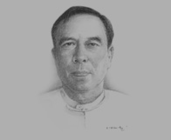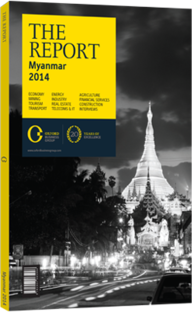OBG talks to U Htay Aung, Union Minister, Ministry of Hotels & Tourism

Interview: U Htay Aung
Since the country opened its doors to the international community, what have been the biggest developments within the tourism sector?
U HTAY AUNG: The most noticeable change has been the increase in the volume of tourist arrivals. In 2012 we had 1.06m people coming into Myanmar, which is a record, and marks a significant rise from 2011, when we had 800,000 arrivals. This substantial increase in volume means we have to be mindful of other supporting elements such as infrastructure, hotel accommodation, human resources, and marketing activities to inform potential tourists of our destinations. Most tourists visit Yangon, Bagan, Mandalay and Lake Inlay, but this is not enough destinations, and therefore these places can become congested. This can have negative effects on these areas and the local communities, and for this reason we need to pay attention to social and environmental impacts of tourism.
As a strategy for growth, what priorities does the Tourism Master Plan focus on in the long term?
HTAY AUNG: There are many key points outlined in the strategy, as the nature of tourism is interconnected with many areas. If you want to open the country, the first thing you have to do is open the borders. So it is important that we are welcoming at the entry points – if tourists have problems at entry points, they won’t come back again. The first impression is crucial if you want to get more people coming through our borders and (more importantly), if you want them to stay longer periods and to spend more money. Another vital element is branding and marketing the country in source markets to create awareness of potential tourists. The key areas of the plan are infrastructure, facilitating travel, human resources development, destination management, product development and the promotion of the nation abroad. A further priority within the sector master plan is to have in place a management system that alleviates bureaucracy and allocates duties to specific members.
What measures need to be taken to ensure the preservation of Myanmar’s culture and heritage?
HTAY AUNG: There have been many workshops and seminars dealing with international experts on this matter. A reoccurring subject is the implementation of fees and tariffs from tourists to assist the preservation and conservation of sensitive areas like Lake Inlay, which are also key tourist attractions. These fees will ensure the preservation for such sites. I have discussed the establishment of a trust fund with relevant organisations, which is not only for environmental preservation but also for corporate social responsibility (CSR). It is vital that firms and local people understand the importance of conserving Myanmar’s natural beauty. One way to achieve this is through awareness campaigns; we are working with international experts to focus on conservation, preservation and CSR. We are also engaged in community involvement with a non-governmental organisation. Our concerns can be summed up in three Ps: the first is “public,” the second is “private,” and the final is the “people”. We are working with all three groups on these issues.
What can be done to attract more high-end tourists to Myanmar and why is this important?
HTAY AUNG: High-end tourism is vital for the conservation and preservation of the country. We have noticed that tourists arriving from long-haul destinations not only spend more than others, but are also more conscious of environmental factors and are more likely to take care of the environment around them when they visit protected areas. They are also pro-active in helping to educate the local people about sustainable and responsible tourism. Backpackers also represent an important segment for the sector despite having less spending power than other tourists. Myanmar is a big country – the second largest in the region after Indonesia – and we want to show it to the world. Therefore, we must find the appropriate balance and properly manage the tourism sector.
You have reached the limit of premium articles you can view for free.
Choose from the options below to purchase print or digital editions of our Reports. You can also purchase a website subscription giving you unlimited access to all of our Reports online for 12 months.
If you have already purchased this Report or have a website subscription, please login to continue.

